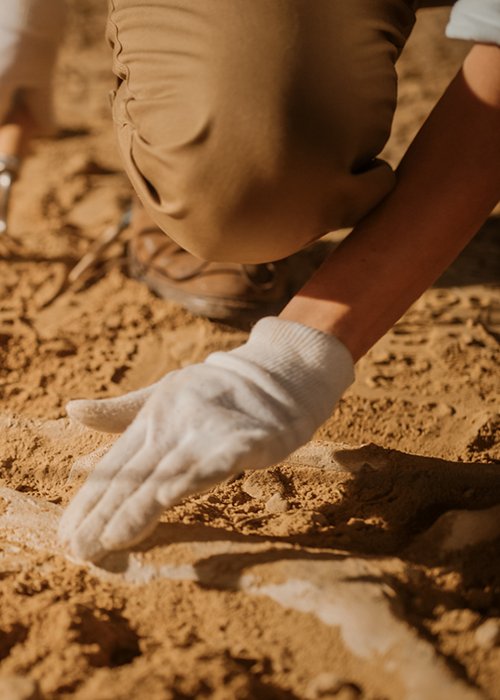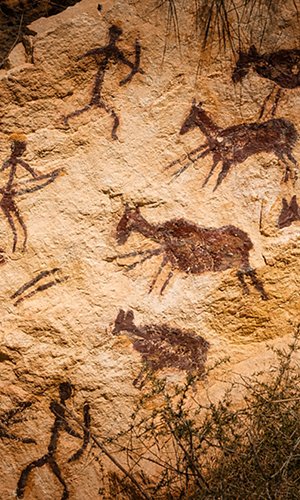A rock painting discovered at an archaeological site in South Africa seems to depict a dragon, a monster, or some mysterious creature. According to the research team that studied it, the creature could be a now-extinct reptile called a dicynodont. The painting was created by the San people, indigenous hunter-gatherers of the Karoo region in South Africa, known for their deep environmental knowledge and sophisticated artwork. The dating of the painting suggests that the San might have known about dicynodonts long before Western scientists did. Dicynodonts were ancestors of mammals that lived between 265 and 200 million years ago, and their fossils—including skulls and teeth—are abundant in the Karoo region. The creature in the painting has two downward-pointing tusks, a feature that resembles dicynodont fossil skulls found in the area. Additionally, the curled posture of the animal’s body, banana-shaped, mirrors the “death pose” often seen in fossil skeletons. These details suggest that the San might have been inspired by dicynodont fossils they encountered. The San likely considered the tusked creature a “rain animal,” a mystical being in their religion, linking fossils to their rain rituals. Dicynodonts thrived in a time when the climate was much wetter than the arid conditions of today’s Karoo, and their size and disappearance may have led the San to associate them with an era of greater water abundance, making them potent symbols in their rain rituals.



